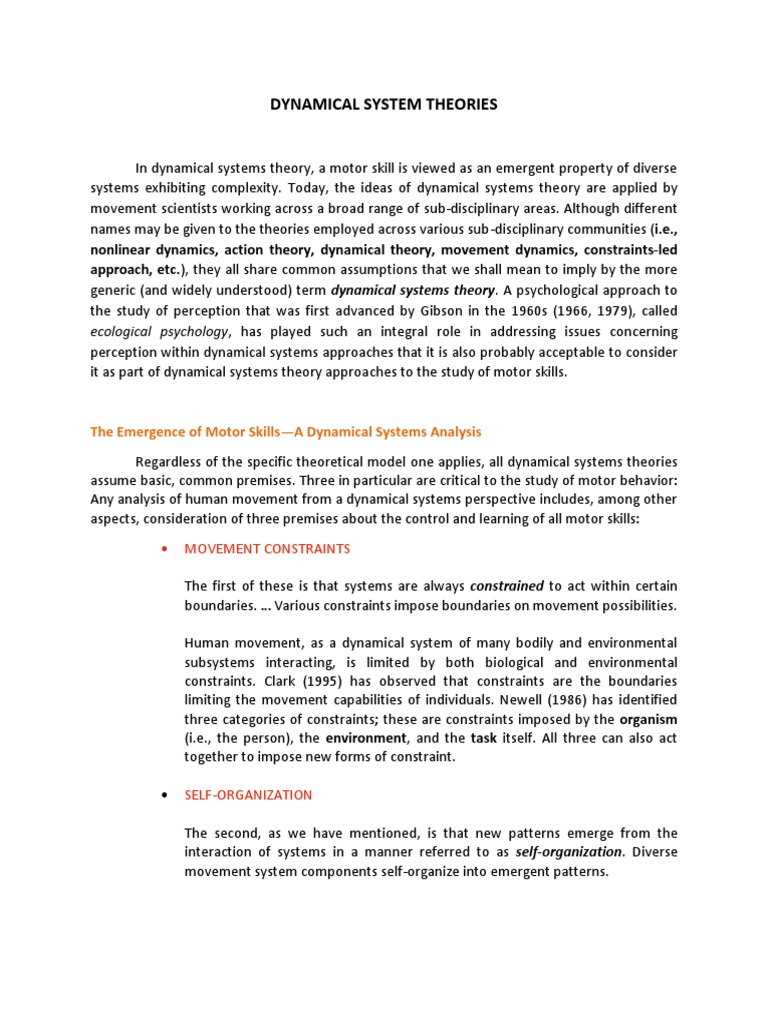Dynamical Systems Theory (DST) has emerged as a pivotal framework in understanding complex biological systems, particularly within the field of systems biology. This mathematical approach serves as an indispensable tool for elucidating the intricate behaviors and interactions of biological components, ranging from cellular signaling pathways to ecosystem dynamics. In this discourse, the multifaceted applications and implications of DST in systems biology will be explored, underscoring how it promises a transformative shift in perspectives and ignites curiosity regarding life’s myriad systems.
The foundation of dynamical systems theory lies in its capacity to model the evolution of systems over time. By employing differential equations, DST enables researchers to capture the temporally dependent behavior of biological entities. For instance, a common application is in the realm of population dynamics, where the Lotka-Volterra equations describe the interaction between predators and prey. Here, DST not only elucidates the oscillatory nature of these populations but also facilitates predictions regarding their long-term stability, or lack thereof. The implications extend beyond mere academic curiosity; they have far-reaching consequences in conservation biology, pest management, and the sustainable harvesting of biological resources.
Beyond ecological interactions, DST provides a robust framework for studying cellular processes. In systems biology, understanding how cells respond to stimuli is crucial. Through the lens of dynamical systems, signal transduction pathways can be modeled as complex networks of nonlinear interactions. This perspective allows researchers to discern how various components—receptors, second messengers, and feedback loops—interact dynamically to govern cellular decisions. The ability to visualize and simulate these interactions through phase space analysis enhances our comprehension of cellular behavior in various contexts, including developmental biology and cancer progression.
The incorporation of DST into systems biology offers not only a holistic view but also innovative approaches to experimental design. Traditional reductionist strategies often fall short in capturing the emergent properties of biological systems. By applying DST, researchers can design experiments that account for feedback loops and nonlinear relationships, ultimately leading to more robust and informative results. The promise here is the enhancement of predictive models which, when accurately calibrated, can facilitate the development of tailored therapeutic interventions in personalized medicine.
Another transformative aspect of DST in systems biology is the concept of attractors. In dynamical systems, attractors represent states towards which a system evolves over time. The notion of attractors is particularly salient in biological contexts, such as in the study of cellular differentiation. Consider stem cells, which can differentiate into multiple cell types; the concept of attractors allows us to conceptualize these distinct cell fates as points in a higher-dimensional space. This perspective not only enriches our understanding of cell identity but also opens avenues for manipulating cellular pathways to achieve desired outcomes, such as regenerative therapies or cancer treatments.
The interplay of feedback mechanisms within biological systems further exemplifies the utility of DST. Feedback loops—whether positive or negative—are intrinsic to biological regulation. For instance, in hormonal regulation, the feedback mechanisms are crucial for maintaining homeostasis. By employing dynamical systems models, one can investigate how perturbations in these feedback loops lead to pathological states, offering insights into diseases such as diabetes or thyroid disorders. Recognizing the delicate balance maintained through these interactions prompts a more nuanced approach to diagnostics and treatment strategies, thus amplifying the relevance of DST in clinical settings.
Moreover, the application of DST is not merely limited to theoretical constructs or experimental investigations; it extends into bioinformatics and computational biology. The vast datasets generated by high-throughput technologies necessitate advanced analytical tools for their interpretation. DST provides a mathematical underpinning for algorithms that can process and elucidate temporal patterns, aiding in the identification of key regulatory nodes within biological networks. As researchers harness the power of machine learning in conjunction with dynamical systems, the potential to uncover novel insights into biological phenomena escalates exponentially.
While the promises of DST in systems biology are profound, challenges remain. The inherent complexity of biological systems often leads to models that are difficult to parameterize and validate. Additionally, the assumptions underlying models can limit their applicability. Thus, interdisciplinary collaboration is essential; the fusion of mathematical rigor with biological experimentation will enhance the reliability and applicability of dynamical systems models. In embracing this integrative approach, the systems biology community can further exploit the capabilities of DST.
In conclusion, Dynamical Systems Theory represents a paradigm shift in the study of systems biology. By providing a robust framework to understand the temporal dynamics of biological systems, it illuminates the complexity of interactions that define life. As researchers continue to explore the synergies between dynamical systems and biological phenomena, we stand on the precipice of groundbreaking advancements. The allure of discovering how these systems operate not only captivates the scientific community but also holds significant promise for improving health outcomes and enhancing our understanding of life’s intricate tapestry. Thus, the journey through the realm of dynamical systems is not just an academic pursuit; it is a voyage into the very essence of life itself.










